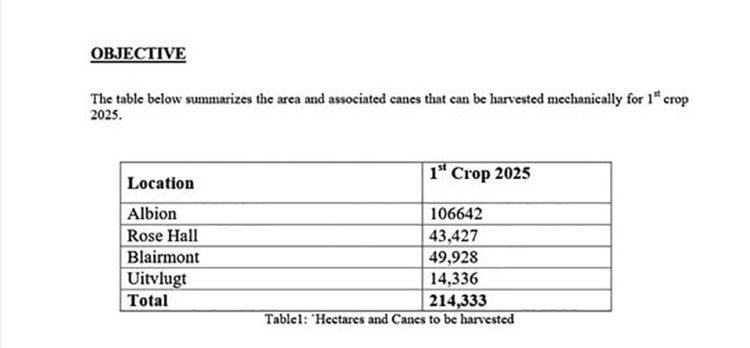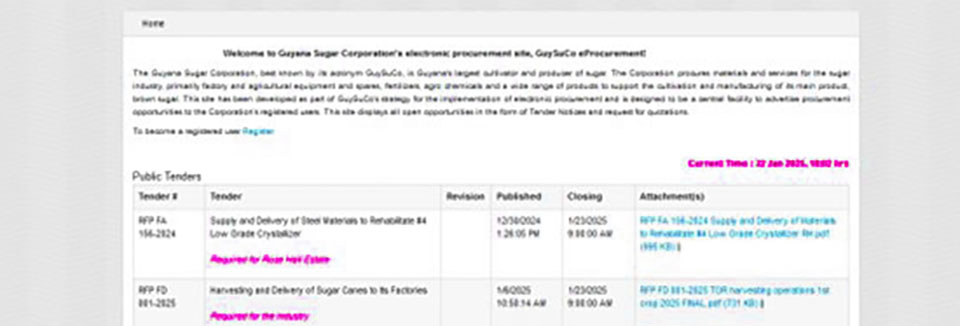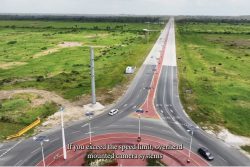The Guyana Sugar Corporation (GuySuCo) is seeking contractors for mechanized sugarcane harvesting and delivery to its factories for the first crop of 2025, according to tender documents posted on its electronic procurement platform on January 6, 2025.
The notice outlined the need for contractors to manage these essential tasks in preparation for the upcoming crop season. According to the document, “Guyana’s sugar industry does not have the resources, especially the manpower, to harvest and supply all the canes cultivated during the limited cropping period, 1st crop in 2025.” The primary goal is to ensure that the factories operate for a minimum of 130 hours weekly during the crop season. There is no mention of a plan for cane cutters who currently complete this task.
This move comes amidst growing concerns about the future of Guyana’s sugar industry, particularly following the government’s recent announcements about plans to mechanize parts of the sector. The government’s 2020 manifesto had also indicated an intention to “establish transparent private sector partnerships in the sugar sector…”

In an editorial on January 11, 2025, Stabroek News expressed concern over the potential consequences of privatization. “While some speculate that private sector companies may absorb these workers, others worry that this change could divert government subsidies into private contracts,” the publication stated, highlighting the uncertainties surrounding the government’s plans.
The tender outlines detailed specifications for mechanical harvesters, including requirements for machinery that can handle various types of cane and factory intake systems. The company aims to deploy mechanical harvesters across multiple locations, including Albion, Blairmont, and Uitvlugt, each of which have factories that can process both whole stalk and billet canes.
However, at Rose Hall, the mechanical harvesting will need to follow a whole stalk method due to the factory’s inability to handle billet canes. Specific machinery and logistical arrangements will be required for transporting the harvested cane from the fields to the factories, with a focus on minimizing spillage and ensuring continuous operations over 24 hours.
The tender also includes specific guidelines for the type of machinery needed. Harvesters must be capable of operating on moist field conditions and should feature adjustable cutting heights, allowing for efficient harvesting on both flat land and small ridges. Additionally, the harvesters must be equipped to handle lodged canes and operate safely during night shifts.
While the focus on mechanization is clear, GuySuCo has also expressed interest in exploring new, less-tested harvesting options. “Mini” harvesters, which weigh between 7 to 8 tonnes and have a rated productivity of 20 tonnes per hour, are being considered for future use, it stated. These machines, currently manufactured in India and China, have not yet been tested in Guyana’s conditions, but GuySuCo sees potential in their capabilities.
For contractors, there are specific obligations related to the cleanliness and efficiency of the harvest. Canes must be cut cleanly with minimal damage to the stump, and contractors must ensure that no canes are left standing or cut and left in the field. Furthermore, contractors must ensure minimal damage to the bed surface, minimize trash and extraneous matter, and maintain sharp cutting edges to prevent smudging of cane stalks.
The call for tenders also includes provisions for managing harvesting operations in adverse weather conditions. In the event of rainfall, management will decide whether harvesting should proceed based on soil moisture levels, and contractors will receive assistance in developing a harvesting pattern suited to the conditions.
Minister of Agriculture Zulfikar Mustapha had revealed that GuySuCo’s 2024 sugar production was 47,123 tonnes, which represented a huge shortfall from the projected 70,016 tonnes. The minister noted that the first crop of the year, which was expected to yield 62,000 tonnes, produced only 7,000 tonnes, a stark deficit attributed to a variety of factors including stunted cane growth and significantly lower cane-to-sugar conversion rates.
Mustapha stressed that the government was not satisfied with these results and President Irfaan Ali had, “… made it very clear that if the target for the first crop in 2025 is not met, which should be no less than 100,000 tonnes, drastic actions will be taken.”










